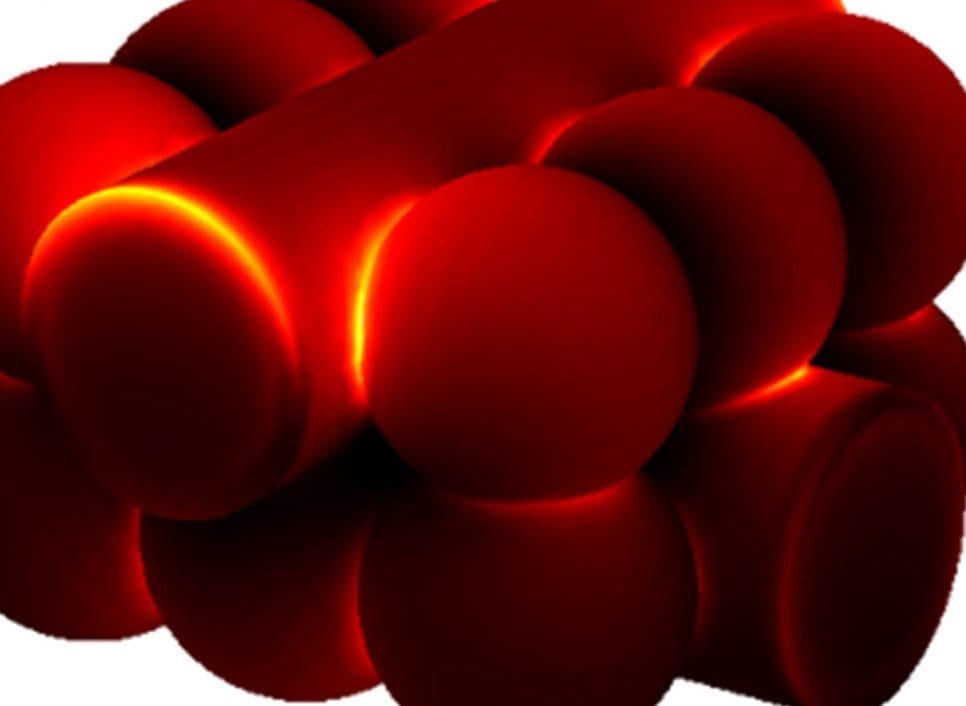
Schematic diagram showing removal of bacterial biofilm via Mtex
POSTECH-UNIST joint research team finds ways to control the surface texture of nanostructures
The COVID-19 pandemic is raising fears of new pathogens such as new viruses or drug-resistant bacteria. To this, a Korean research team has recently drawn attention for developing the technology for removing antibiotic-resistant bacteria by controlling the surface texture of nanomaterials.
A joint research team from POSTECH and UNIST has introduced mixed-FeCo-oxide-based surface-textured nanostructures (MTex) as highly efficient magneto-catalytic platform in the international journal Nano Letters. The team consisted of professors In Su Lee and Amit Kumar with Dr. Nitee Kumari of POSTECH’s Department of Chemistry and Professor Yoon-Kyung Cho and Dr. Sumit Kumar of UNIST’s Department of Biomedical Engineering.
First, the researchers synthesized smooth surface nanocrystals in which various metal ions were wrapped in an organic polymer shell and heated them at a very high temperature. While annealing the polymer shell, a high-temperature solid-state chemical reaction induced mixing of other metal ions on the nanocrystal surface, creating a number of few-nm-sized branches and holes on it. This unique surface texture was found to catalyze a chemical reaction that produced reactive oxygen species (ROS) that kills the bacteria. It was also confirmed to be highly magnetic and easily attracted toward the external magnetic field. The team had discovered a synthetic strategy for converting normal nanocrystals without surface features into highly functional mixed-metal-oxide nanocrystals.
The research team named this surface topography – with branches and holes that resembles that of a ploughed field – “MTex.” This unique surface texture has been verified to increase the mobility of nanoparticles to allow efficient penetration into biofilm*1 matrix while showing high activity in generating reactive oxygen species (ROS) that are lethal to bacteria.
This system produces ROS over a broad pH range and can effectively diffuse into the biofilm and kill the embedded bacteria resistant to antibiotics. And since the nanostructures are magnetic, biofilm debris can be scraped out even from the hard-to-reach microchannels.
“This newly developed MTex shows high catalytic activity, distinct from the stable smooth-surface of the conventional spinel*2 forms,” explained Dr. Amit Kumar, one of the corresponding authors of the paper. “This characteristic is very useful in infiltrating biofilms even in small spaces and is effective in killing the bacteria and removing biofilms.”
“This research allows to regulate the surface nanotexturization, which opens up possibilities to augment and control the exposure of active sites,” remarked Professor In Su Lee who led the research. “We anticipate the nanoscale-textured surfaces to contribute significantly in developing a broad array of new enzyme-like properties at the nano-bio interface.”
The Latest Updates from Bing News & Google News
Go deeper with Bing News on:
Antibiotic-resistant bacteria
- Raw Meat for Pets: Possible Link to Antibiotic-resistant Bacteria
Study shows raw meat fed to animals causes antibiotic resistance to critical antibiotics, which can also be acquired by pet owners when feeding companion animals.
- Antibiotic Alternative Produced by Gram-Positive Bacteria
Due to increasing antibiotic resistance in pathogens causing infections, the development of new antibacterial substances is needed. Scientists are testing out a new group of substances produced by ...
- Possible alternative to antibiotics produced by bacteria
Many bacteria produce substances to gain an advantage over competitors in their highly competitive natural environment. Researchers have discovered a new so-called lantibiotic, namely epilancin A37.
- Pathogens including multi-drug resistant superbugs found on floors, ceilings and door handles of UK hospital toilets
Pathogenic bacteria and fungi, including multi-drug resistant "superbugs" have been found on the floors, ceilings, door handles and other surfaces of hospital toilets in the UK, with patient toilets ...
- A New Class of Antimicrobial Compounds Discovered in Soil Bacteria
Hundreds of thousands of people die every year from antibiotic-resistant infections or from the complications of those infections, and the problem is only | Microbiology ...
Go deeper with Google Headlines on:
Antibiotic-resistant bacteria
[google_news title=”” keyword=”antibiotic-resistant bacteria” num_posts=”5″ blurb_length=”0″ show_thumb=”left”]
Go deeper with Bing News on:
Nanoscale-textured surfaces
- Sourdough under the microscope reveals microbes cultivated over generations
Since sourdough starters are created from wild yeast and bacteria in the flour, it creates a favorable environment for many types of microbes to flourish. There can be more than 20 different species ...
- A high-fidelity model for designing efficient thermal management surfaces
In the past decade, fires from electronic devices and batteries, from small smartphones to electrical vehicles and airplanes, have repeatedly made headlines. Enhanced computational power has led to a ...
- Texture makes a bid to become the world’s go-to platform of the energy transition
“So I decided to go and build it,” he told TechCrunch. Sanghavi’s newest company, Texture, seeks to become a common data collection and sharing platform for renewable power sources like wind, solar, ...
- Swarf hosts platinum to make ‘highly efficient catalyst’
Nottingham University scientists have deposited platinum onto swarf to create a highly efficient catalyst to make hydrogen from water, an advance that could make hydrogen production more sustainable.
- Trash To Treasure: Researchers Turn Metal Waste Into Catalyst for Green Hydrogen
Scientists have found a way to transform metal waste into a highly efficient catalyst to make hydrogen from water, a discovery that could make hydrogen production more sustainable. ...
Go deeper with Google Headlines on:
Nanoscale-textured surfaces
[google_news title=”” keyword=”nanoscale-textured surfaces” num_posts=”5″ blurb_length=”0″ show_thumb=”left”]










